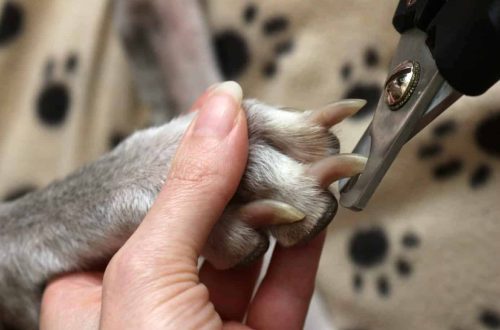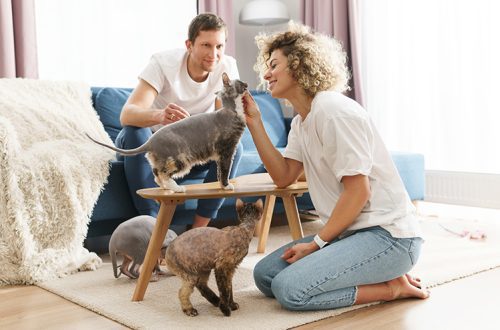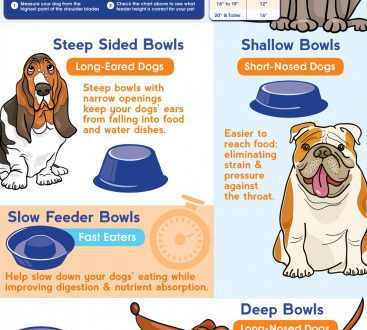
What breed of dog can be allergic?
Can I get a dog if I have a predisposition to allergies? Can allergies go away with time? Are there hypoallergenic breeds? In our article, we will analyze these issues in detail and list the dog breeds that are less likely to cause an allergic reaction.
Ideally, pet allergies should be considered long before purchasing a pet. You need to check not only yourself, but also all family members who live with you in the same apartment and will be in contact with the dog. Just think what a tragedy for you and your four-legged friend will be the sudden manifestation of allergies, when you have already got used to each other and made friends. But in this case, do not rush to conclusions.
Only an allergist can determine if your dog is the cause of the allergy. Sometimes there are cases of reactions to animal care products. It also happens that another disease is mistaken for an allergy: SARS or, for example, conjunctivitis, which are in no way connected with a dog. Symptoms of allergies and other diseases can be similar. This is redness and tearing of the eyes, runny nose, sneezing, itchy skin, shortness of breath. To understand the true cause of the malaise, do allergy tests. They are of two kinds.
A smear or complete blood count will determine whether a runny nose or redness of the eyes is a manifestation of an allergy. Immunoglobulin E in the sample shows that the malaise is an allergic reaction, not an infection. But to find out what exactly you are allergic to, either a blood test for the determination of specific immunoglobulin E, or skin allergy tests will help. It may turn out that you are allergic not to the dog, but to its food or to your new household chemicals.
Even if the cause of the allergy is a dog, everything is not simple here either. Wool allergy is a common name. In fact, allergies are caused by proteins that the dog secretes. Proteins enter the environment with the secretions of the sebaceous glands, eyes, nose, saliva and urine. But since they settle on wool, the expression “allergy to wool” has come into use.
It is important to understand what specifically caused the allergy. If the issue is in the dog’s skin secret, it will be enough to take care of the skin more carefully, wash the pet regularly and limit tactile contacts with it. But only an allergist can make a diagnosis.
The doctor will decide how possible your life together with the pet is. It depends on the degree of manifestation of allergic reactions in your body and the state of health in general. It is important to listen to the recommendations.

In different people (and even in the same person at different periods of life), allergies can manifest themselves in different ways.
Sometimes a person feels bad immediately after contact with a pet, and sometimes the “accumulation effect” works. It happens that an allergy occurs to a specific dog, but when in contact with another, everything is in order. There are even cases when the allergy “passes” by itself. Thus, the body adapts to a large number of allergens. But if you go on a trip and do not contact the dog for some time, then when you return home, the allergy will hit you with renewed vigor.
However, the danger of allergies should not be underestimated. An allergic person living side by side with an allergen can cause serious health problems in the future. Constant manifestations of allergies run the risk of developing into asthma.
But what if you don’t have the option not to have contact with the dog? Your doctor may prescribe a drug that will reduce the symptoms of your allergy and help keep your condition from getting worse. There is also a radical method of treatment – allergen-specific immunotherapy. An allergist may recommend this method of treatment to patients whose occupation requires constant contact with pets. Such therapy can cure a person of allergies for many years or even forever.
What kind of dog can get allergic? There are no completely hypoallergenic dogs. But there are breeds that emit fewer allergens. Such pets can be called more suitable dogs for allergy sufferers and asthmatics.
Conditionally called hypoallergenic dogs can be dogs that do not shed or shed rarely. These are dogs without a thick undercoat or no undercoat at all, rough-haired breeds that need to be trimmed.
Do not focus solely on the length and thickness of the coat. All smooth-haired dogs shed daily. And hairless dogs – the American Hairless Terrier, the Mexican Hairless Dog and other breeds – require very careful care of their skin. If you are allergic to dog sebum, a hairless pet is not the best option.
Pay attention to the structure of the skull and muzzle of the dog. Dogs with a short muzzle (for example, bulldogs and pugs), as well as dogs with large jowls, have increased salivation. Their saliva lingers in the fly – and the allergens remain on the pet’s face for a long time. If you react to dog saliva, it is best to choose a dog with a “normal” muzzle structure.
What dog breeds are recommended for allergy sufferers? These are all varieties of schnauzers, regardless of size. Wirehaired Terriers – Jack Russell Terrier, Irish Terrier, Airedale Terrier, Welsh Terrier. Take a closer look at such breeds as the German Drathaar, Poodle, Brussels Griffon, Wirehaired Dachshunds. Another example is the friendly small hypoallergenic dogs of the Shih Tzu, Yorkshire Terrier, Bichon Frize breeds.
Before you buy a pet, find out as much information about it as possible, talk to breeders. It is important for you to evaluate not only the degree of his “hypoallergenicity”, but also his temperament, the features of care. Is this dog right for you?
To begin with, it is advisable to get acquainted with a potential pet in neutral territory. Spend some time with him, track your condition. It happens that even representatives of hypoallergenic breeds cause an allergic reaction. Everything is very individual.

A competent choice of breed does not mean that the problem with allergies is completely solved. It is important to maintain cleanliness in the house, properly feed the pet and take care of it, walk it regularly.
A healthy pet emits fewer allergens. If your dog does not shed under normal conditions, then the appearance of wool on the floor indicates that the dog is unwell or that it has been improperly cared for and maintained. Many ailments are accompanied by copious discharge from the nose, mouth, eyes, ears. All this increases the content of allergens in the house where the pet lives. The more carefully you monitor the health of the dog, the higher your chances of maintaining your own health.
There are a number of hygiene rules that will help to avoid manifestations of allergies to wool.
After contact with the pet, do not touch your face with your hands, wash your hands thoroughly with soap and water.
Do wet cleaning as often as possible.
Use air purifiers.
Washing and vacuum cleaners with good filters will help maintain cleanliness in the house.
Ventilate the room regularly.
Remove all carpets from the house – allergens can settle and accumulate in them.
Do not let the dog into the bedroom, do not sleep with him in the same bed. Let the pet get used to the fact that the bedroom is a room in which he is not allowed.
Upholstered furniture is also better to keep in this forbidden zone for the dog. This is important, because allergens can persist for up to six months in a room inhabited by a dog. Leaving your dog for a couple of weeks will not affect the presence of allergens. In the absence of a pet, it is also necessary to ventilate and do wet cleaning of the room.
Wash and brush your dog regularly. It is desirable that these procedures are performed by those households who do not have allergies. You can turn to professional groomers – then questions with wool will be resolved outside the apartment.
Ask your doctor for advice on antihistamines. You can always keep them in your home medicine cabinet and quickly take the right drug if a reaction does occur.
Being prone to allergies doesn’t always mean you can’t have a four-legged friend. But if you or your relatives have very active allergies when dealing with dogs, it is better to opt for other pets. Why don’t you get a parrot, turtle or fish? We wish health to all your loved ones!





